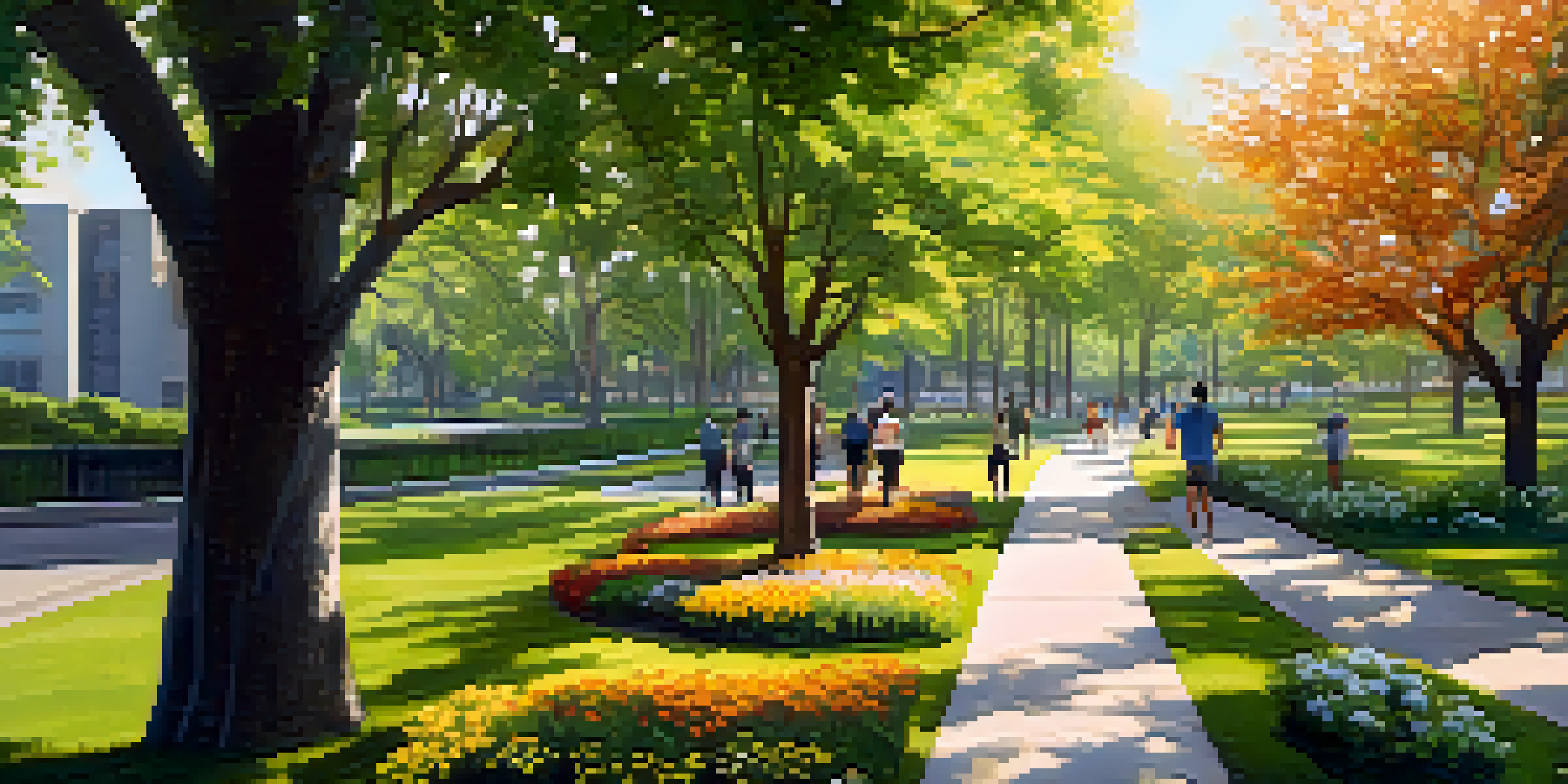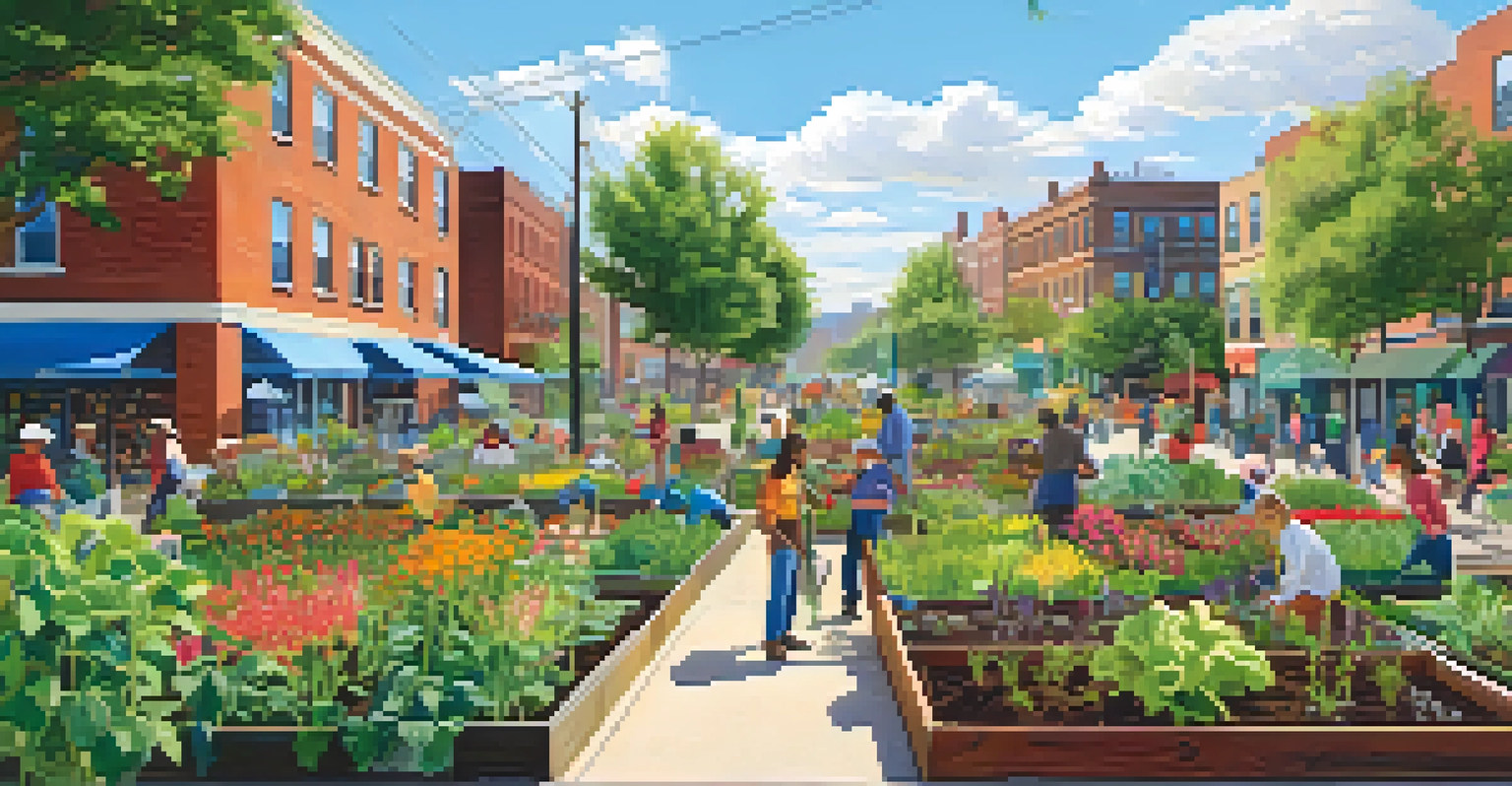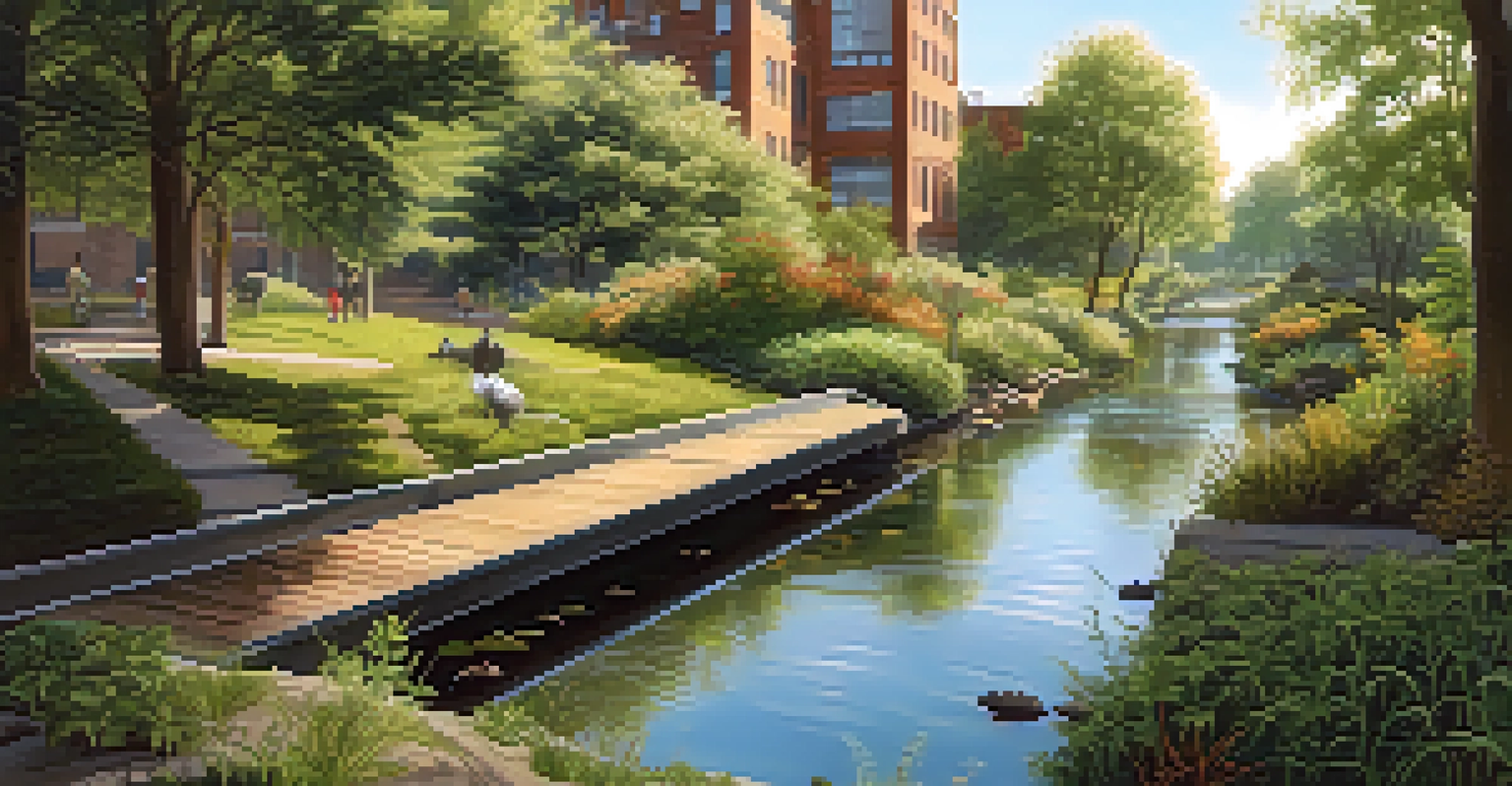The Importance of Urban Conservation in Washington State

Understanding Urban Conservation: What It Means
Urban conservation refers to the efforts aimed at preserving the natural environment within cities. In Washington State, this often involves maintaining green spaces, protecting wildlife habitats, and ensuring sustainable development. It's about finding a balance between urban growth and environmental stewardship, ensuring that cities can thrive without sacrificing their natural beauty.
The environment is where we all meet; where we all have a mutual interest; it is the one thing all of us share.
In a region known for its stunning landscapes, urban conservation helps to preserve the unique ecosystems that exist alongside urban areas. For example, Seattle's urban forests not only provide recreation spaces but also support biodiversity. This preservation is crucial in maintaining the health of local flora and fauna, which can be adversely affected by urban sprawl.
Ultimately, urban conservation is about creating livable cities that respect and incorporate nature. By understanding its importance, residents and policymakers can work together towards a sustainable future that benefits both people and the environment.
The Benefits of Urban Green Spaces
Green spaces, such as parks and community gardens, play a vital role in urban conservation. They provide residents with places to relax, exercise, and connect with nature. In Washington State, these areas not only enhance the aesthetic appeal of cities but also improve air quality and reduce urban heat.

Moreover, green spaces contribute to mental well-being, offering an escape from the hustle and bustle of city life. Research has shown that spending time in nature can lower stress levels and promote a sense of community. In cities like Tacoma, local parks serve as gathering spots, fostering social interactions and community spirit.
Importance of Urban Conservation
Urban conservation balances growth and nature, ensuring cities thrive while preserving their ecosystems.
Additionally, green spaces can boost property values and attract tourism. For instance, well-maintained parks in urban areas can become popular destinations, drawing visitors and supporting local businesses. This symbiotic relationship highlights the economic benefits of investing in urban conservation.
Biodiversity: A Key Component of Urban Conservation
Biodiversity refers to the variety of life in a particular habitat, and its preservation is a cornerstone of urban conservation. In Washington State, the unique mix of urban and natural environments supports a rich array of species. However, urbanization often threatens these habitats, making conservation efforts essential.
In every walk with nature one receives far more than he seeks.
By protecting and restoring habitats within urban areas, we can support local wildlife populations. For example, creating wildlife corridors or preserving wetlands can help species like salmon thrive even in metropolitan settings. These efforts not only benefit the animals but also enrich the urban ecosystem as a whole.
Furthermore, promoting biodiversity improves resilience against environmental challenges such as climate change. A diverse ecosystem can better withstand shocks and stresses, ensuring that urban areas remain vibrant and sustainable in the long run.
Community Engagement in Conservation Efforts
Community involvement is crucial for successful urban conservation initiatives. Engaging residents in conservation efforts fosters a sense of ownership and responsibility toward local natural resources. In Washington State, community-driven projects, such as tree planting and clean-up events, have become increasingly popular.
When residents participate in these initiatives, they develop a deeper understanding of the importance of preserving their environment. This engagement can lead to more sustainable practices in daily life, such as recycling, reducing waste, and supporting local conservation policies. It's about creating a culture of stewardship that extends beyond organized events.
Benefits of Green Spaces
Green spaces enhance urban life by improving air quality, promoting mental well-being, and boosting local economies.
Moreover, when communities come together for conservation, it strengthens relationships among neighbors. These collaborations not only enhance the local environment but also build social ties, making urban areas more resilient and cohesive.
The Role of Policy in Urban Conservation
Effective policy is a driving force behind successful urban conservation efforts. In Washington State, local governments have implemented various regulations and incentives to promote sustainable development. Policies that prioritize green building practices, zoning for parks, and preserving natural areas are essential for maintaining the balance between development and conservation.
Additionally, public funding for conservation initiatives can significantly impact their success. For instance, grants for urban forestry projects or funding for habitat restoration can enable communities to implement their conservation goals effectively. These investments not only benefit the environment but also improve the quality of life for residents.
It's also important for policymakers to involve community input in conservation planning. By considering the needs and desires of residents, policies can be tailored to reflect the values of the community, making conservation efforts more impactful and widely supported.
Challenges Facing Urban Conservation in Washington
Despite its importance, urban conservation in Washington State faces several challenges. Rapid urbanization and population growth can lead to habitat loss and increased pollution. As cities expand, the pressure on natural areas intensifies, making conservation efforts more critical than ever.
Another challenge is the often limited funding for conservation projects. While policy support is crucial, financial resources are necessary to implement and maintain conservation initiatives effectively. Communities may struggle to secure funding, hindering their ability to carry out vital projects.
Community's Role in Conservation
Community engagement fosters stewardship, builds social ties, and enhances the effectiveness of conservation efforts.
Additionally, climate change poses a significant threat to urban conservation. Rising temperatures and changing weather patterns can disrupt local ecosystems, making it essential for conservation strategies to adapt. Finding innovative solutions to these challenges will be key to ensuring the future of urban conservation in Washington.
Innovative Solutions for Sustainable Urban Development
Innovation plays a crucial role in addressing the challenges of urban conservation. In Washington State, cities are adopting smart growth strategies that prioritize sustainability and environmental preservation. For example, mixed-use developments can reduce the need for extensive transportation infrastructure while promoting walkability.
Technology also offers new opportunities for urban conservation. Tools such as Geographic Information Systems (GIS) help planners visualize the impact of development on ecosystems. By analyzing data, cities can make informed decisions that align with conservation goals.

Moreover, community-driven technology initiatives, like apps for tracking local wildlife sightings, encourage residents to participate in conservation. These innovative approaches not only empower communities but also foster a deeper connection to their environment, promoting a culture of sustainability.